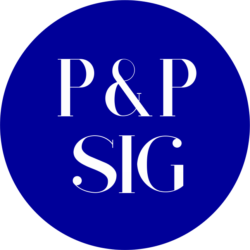Proceedings-1996; By Diane L. Whitmer; Summary by Maria Christophel (2006)
This article provides a brief insight of the benefits inherent in using the team approach for writing policies and procedures. The article provides a method for structuring the documentation teams, for planning the writing, and for developing the documentation. The article describes team consensus, sense of ownership, stronger writing skills, and sense of hard-earned accomplishment as benefits of using the team approach.
Techniques for Successful SME Interviews
Intercom-March 2000; By Jennifer L. Lambe; Summary by Maria Christophel (2006)
This article acknowledges the various techniques for gathering information, but it provides techniques for conducting successful interview with subject matter experts (SMEs). The article notes that SMEs may have various degrees of communication skills and therefore, it is the writer’s (interviewer’s) job to get prepared to optimize the results of the interview. It provides steps that should be taken prior, during, and after the interview. The steps prior to the interview include defining objectives, preparing for the meeting, and being punctual. The steps for during the interview include using active listening skills, asking open-ended questions, politely controlling the interview, repeating information to ensure understanding, identifying gaps, being accurate, organizing the information, and making no promises. The steps for closing the interview include thanking the SMEs, asking permission to follow up, reviewing notes immediately after the interview.
Flowcharting Processes and Procedures
Proceedings-1994; Raymond E. Urgo; Summary by Maria Christophel (2006)
This article is a brief summary of the discussion presented at the STC Conference. It introduces Flowcharting as a tool, which technical writers may use for communicating processes and procedures. This article notes the difference between a process and a procedure, and it defines the appropriateness of flowcharting for either. It mentions interrelation of processes, the source of flowcharting symbols, and the techniques of flowcharting design.
Flowcharting Performance-Based Processes and Procedures
Proceedings-1995; Raymond E. Urgo; Summary by Maria Christophel (2006)
This article provides a brief insight into flowcharting as a tool for documenting processes and procedures. It defines flowcharting and describes its origin, format, and style. It briefly discusses tools, training, and trends.
Dynamic Content Management
Proceedings-2002-By Ann Rockley; Summary by Maria Christophel (2006)
This article defines dynamic content and provides examples of its use by companies of diverse operations and by E-commerce. It lists and explains the requirements for developing dynamic content, and provides a diagram that defines the process of dynamic content. It discusses the delivery of dynamic content documentation and explains the importance of dynamic content engines to retrieve the stored information. It notes this new writing method to be an opportunity for technical communicators, information designer/architect.
Developing Internal Procedures Online – The HowWe Manuals Project at Suncorp
Proceedings-1996; By Dean Bell and Helen Smith; Summary by Maria Christophel (2006)
This article provides a brief outline of the topics that were covered in the session presented at the SCT Conference. The purpose of the session was to relate activities performed during the various phases of developing internal procedures for online delivery at Suncorp.
Writing Processes and Procedures Using Audience Analysis and the ISO 9000 Document Hierarchy
Proceedings-2000: By Tricia Cunat and Amary Craig; Summary by Maria Christophel (2006)
This article describes the method for writing processes and procedures using as the base a detailed analysis of the audience and the ISO 9000 definition of process vs. procedure. It provides a detailed definition and a comparison between processes and procedures, and provides examples of when using either or both is appropriate. It defines audiences and provides a model matrix for identifying potential audiences in the development of a user manual. In addition, it presents types of formats for delivering processes and procedures to the audience.
Web Delivery of Corporate Policies and Procedures
Proceedings-2001-Jeannete P. Evans; Summary by Maria Christophel (2006)
This article outlines the advantages and disadvantages of delivering policies and procedures through the web. It presents the results of surveys conducted in a company to decide on the selection of the best delivery method to alleviate the old problem of maintaining policies and procedures binders updated. The author presents in a series of tables, the conclusions of research activities, advantages/disadvantages of online delivery, and the results of implementing web delivery.
Transition To Process-Based Policies and Procedures
Proceedings-1997; By Jerri L. Huclayer; Summary by Maria Christophel (2006)
This article describes the old format for writing P&P and indicates the reasons why this format is becoming obsolete. It describes process-based policies as the new format of writing and points out the benefits of using such method. It explains that the new format places more importance on the process rather than who is doing the process.
The Technical Writing Machine- A Model for Teaching Writers How to Develop Troubleshooting Procedures
Proceedings-1997; By Thomas F. Moran; Summary by Maria Christophel (2006)
This article presents The Technical Writing Machine as a model for teaching students to develop troubleshooting procedures. It indicates the reasons for creating the model and the benefits derived by its use. It presents a diagram of the model and explains the flow and its different components. The application of the model produces malfunctions systems for which strategies for problem solving must be written.
